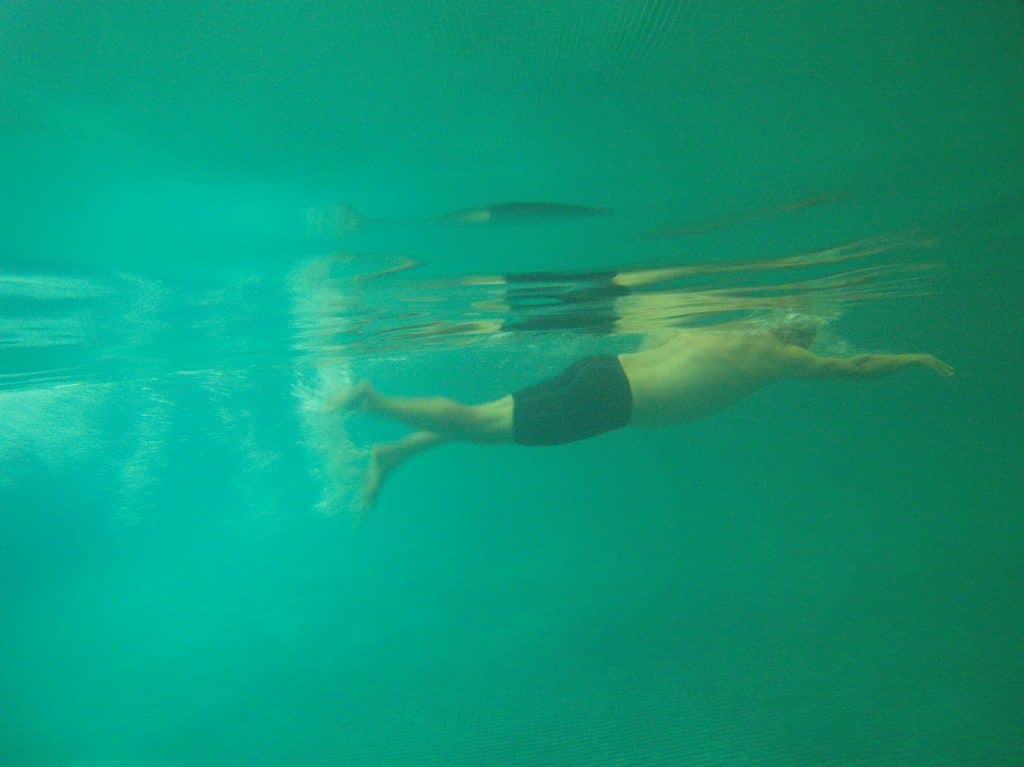10 Tips for Front Crawl Kick…
In Eleanor Simmonds’ 400 metre gold medal freestyle race in 2012, the US silver medallist had a lovely long, rangy stroke. But the taller swimmer wasn’t able to kick her legs like Ellie. While elite swimmers sometimes seem not to be doing much with their legs, kicking drives the rotation of the stroke and minimises drag.
When you know how to kick effectively, you don’t need to work the legs very hard. But before you can ease off on the kick, you need to be able to do it! Here are ten front crawl kick tips…
1 Loose ankles and flipper like feet..
If your ankles are relaxed in front crawl, your toes should be pointing away from your head. But don’t actively point your toes like a ballerina. If you soften your ankles and just relax your feet, they might be like flippers and help you move.
2 Think ‘one leg at a time’..
As the ‘flipper’ on the end of one leg meets the resistance of the water, this moves you forward. The other leg springs back automatically at the same time. So actively kick one leg at a time. You don’t need to think about the recovery of the leg which isn’t kicking. It will just happen.
3 Kick footballs..
The direction you’re energetically sending your leg is always forward in relation to your body, like when you kick a ball. If you’re face down and flat in the water (practising kicking in isolation from the rest of the stroke) don’t worry about keeping your legs up. Kick them towards the bottom of the pool, one at a time, away from your body. So if you’re on your front, bounce balls off the bottom of the pool. If you’re on your back, make little splashes with your toes and kick footballs out of the water. If ‘footballs’ doesn’t work for you, imagine you have a spider on the end of your big toe!
4 Rotate..
In front crawl the legs need to rotate with the hips. As you practise kicking on its own, see how, with each kick, your hips and body want to rotate a little. In the full stroke, the kick actually feeds the rotation which creates the glide in the stroke.
5 Leg that’s lower works harder..
If your legs are rotated, with your body sideways on, the lower leg needs to work harder. This is because it’s deeper than the upper leg so there’s more resistance. Practise kicking on the side, one arm extended, head neutral, looking down, lower leg leading.
6 Use the whole leg..
Because you want to involve your whole leg in each kick, keeping it long and loose, you don’t want to do it all from the knee. If you kicked just from your knee, your foot might come right up out of the water, indicating too much effort in the recovery phase.
7 Knees forward..
Don’t try and keep your legs straight by locking your knees. ‘Straight legs’ is a bad instruction used to stop excessive kicking from the knees. But your knee should always be forward of your hip. It’s useful to think of your knees pointing where your foot is going to go.
8 Coordinating left and right sides..
Remember that in front crawl you’re switching your attention from left side to right side, not from top half to bottom half like in breast stroke. You’re rotating all the time, from left to right.
9 Kick then rest..
Once the legs have done their job of helping feed one rotation and glide, they can rest before they’re needed again for the next one.
10 Try to avoid using kick boards and pull buoys..
Both of these training aids cause you to fix your hips and impede rotation.


